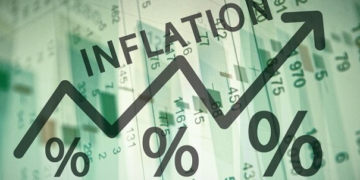(Greenwich Merchant Bank): China posted a GDP growth of 6.5% Y-o-Y and 2.6% Q-o-Q in the final quarter of 2020, according to the Chinese Bureau of Statistics, bringing the full-year growth rate to 2.3%. This indicates a V-shaped recovery to pre-pandemic level and surpasses the projections of 1.85% and 2.0% by the IMF and World Bank respectively.
Activities picked up faster-than-expected in the fourth quarter, on the back of its industrial output and exports that surged to meet the demand for medical equipment and work-from-home devices. More precisely, resilient exports in December fuelled output growth in the face of coronavirus pandemic and a stronger yuan. This was further aided by policy stimulus introduced to stimulate economic activities in view of the black swan event.
Read: FY 2020: Unilever Nigeria Plc remains in loss despite revenue growth
Whilst the Industrial output surged 7.3% in December from the previous year, and 2.8% in 2020, Retail sales for 2020 declined to 4.6% from 5.0% in the previous month, though this marked its fifth successive month of expansion. At the end of 2020, retail sales dipped 3.9%, due to the decline in catering and restaurant services, reflecting a slowing pace of consumption.
Notwithstanding the uptick in production levels, consumption trailed industrial production, with consumption spending per capita shrinking 4.0% in 2020, as long-term imbalances depreciated with an increase in income inequality which is still below pre-pandemic level.
Also, the downside to the Chinese government’s accommodative stance has led to a sharp increase in debt which will need to be effectively curbed.
Despite being the first country to experience the slumping effect of the COVID-19, wherein the nation recorded its weakest decline of 6.8% in its Q1:2020 GDP, it is evident that China effectively managed the spread of the pandemic before the advent of an effective vaccine, even as other economies started to recover largely on the back of vaccinations. This is on the footing that China is the only major economy to post growth in 2020, in spite of the resurgence in COVID-19 cases.
However, in view of the surging debt levels, we posit that the government may begin to gradually withdraw some of these stimuli and redirect the same to local consumers to drive general consumption growth.
While we do not expect surging COVID-19 cases, to discourage growth in the next quarter if well managed, there is a high expectation on the impact the trade strategy the Biden administration will employ with respect to the subsisting Sino-U.S. trade tension.
Moreover, job creation and unemployment surpassed their targets of 9million and 6% to around 11.86million jobs and 5.6%. Overall, growth is projected to settle at 7.9% according to the IMF, envisaged on the back of a supportive low base, a rebound in consumption, amid the rollout of Covid-19 vaccinations.

























































